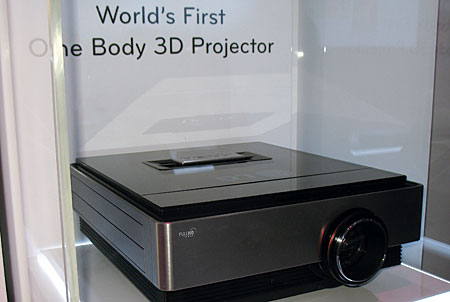3D: The Next Big Thing? Page 3
PS3 and HDMI Connections
Our initial research indicates that in order to pass the full 3D signal, HDMI 1.4 is required in the player, the display, and any passthrough switching devices along the way. The single possible exception is Sony’s PlayStation3. According to Sony, a firmware update will enable this player to decode the two full-resolution 3D images and pass them through its HDMI 1.3 output. However, no other current Blu-ray player will be compatible with or upgradeable for 3D Blu-ray playback.
Once it’s out of the player, a highbandwidth 3D HD source must navigate any switching devices in the chain (such as your A/V receiver) and the input to your 3D TV. The TV’s input should not be an issue, as all new 3D HDTVs should have HDMI 1.4. But you need HDMI 1.4 in order to switch devices so they can pass the full 3D signal.
Will your current HDMI 1.3 A/V receiver pass the 3D signal on to the display? HDMI 1.3 has the same bandwidth as HDMI 1.4, so the answer is an unqualified maybe. Some AVRs may work; others may not. They might send the signal along but do something unexpected like strip off the data that tells the set to automatically switch to 3D mode. You might be able to get around this problem by switching the TV manually. But if it doesn’t work with your particular AVR, you’ll need to send the HDMI signal directly to the TV. This means your AVR won’t tap high-resolution audio from the HDMI link.

Short of buying a new HDMI 1.4equipped AVR, you’ll need to get a 3D Blu-ray player with two HDMI outputs, at least one of which is HDMI 1.4. Both must operate at the same time. Of course, that player won’t be a PS3, which has never had more than one HDMI port.
At least two manufacturers, Sony and Panasonic, have announced that their first dedicated Blu-ray players will have two HDMI outputs.
3D TV
The Blu-ray Disc Association (BDA) isn’t the only player in the race to provide 3D programming to the home. DIRECTV has announced that it plans to carry 3D channels from both ESPN and Discovery, with ESPN due this year and Discovery due in 2011.
DIRECTV confirmed that it plans to use a frame-compatible technique for its 3D TV channels. It’s likely that other satellite and cable providers will do so as well. With this process, the pair of alternate-eye images for each frame are squeezed horizontally to half their original width. Then they are placed together side by side to fit into a standard HD frame. This frame can pass through a standard 2D high-definition pipeline, which reduces the need for new and expensive infrastructure.
It’s possible to squeeze the two images into the HD frame vertically rather than horizontally. But in either case, squeezing each image results in the loss of half the original source pixels. This will cause a half-resolution picture. Proponents of this process claim that a loss of resolution in 3D is less visible than it is in 2D. This remains to be seen.

To our thinking, this sort of 3D cannot be called full high definition. “Good enough” is too often a winner in races between competing technologies, and free reduced-resolution 3D over cable or satellite could limit the potential market for true 3D HD content on Blu-ray.
Up… and Down
If you feel a little like Carl in Up, as if this whole 3D thing is an exciting but confusing adventure, you’re not alone. A lot
of balloons need to be inflated before the whole shebang can take off. Manufacturers are pumping them up as fast as they can.
We’ll have a lot more to say about 3D in the coming months, particularly as we review the inevitable products. One thing is certain: 2010 will be an interesting year.
- Log in or register to post comments















































